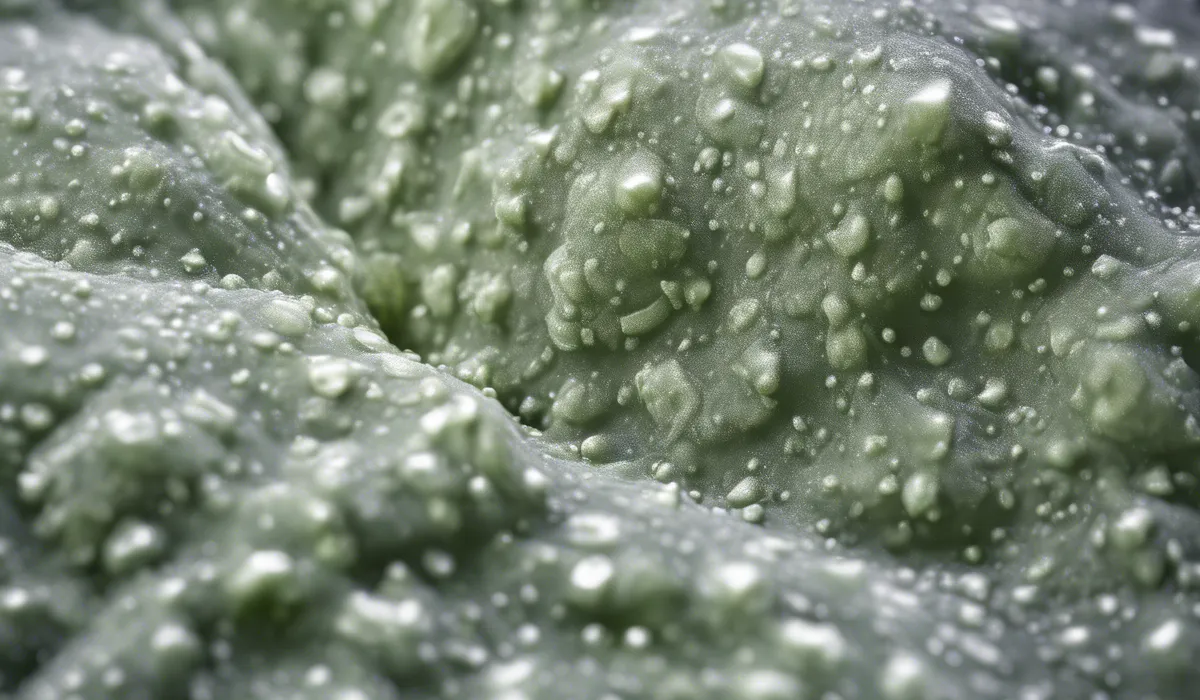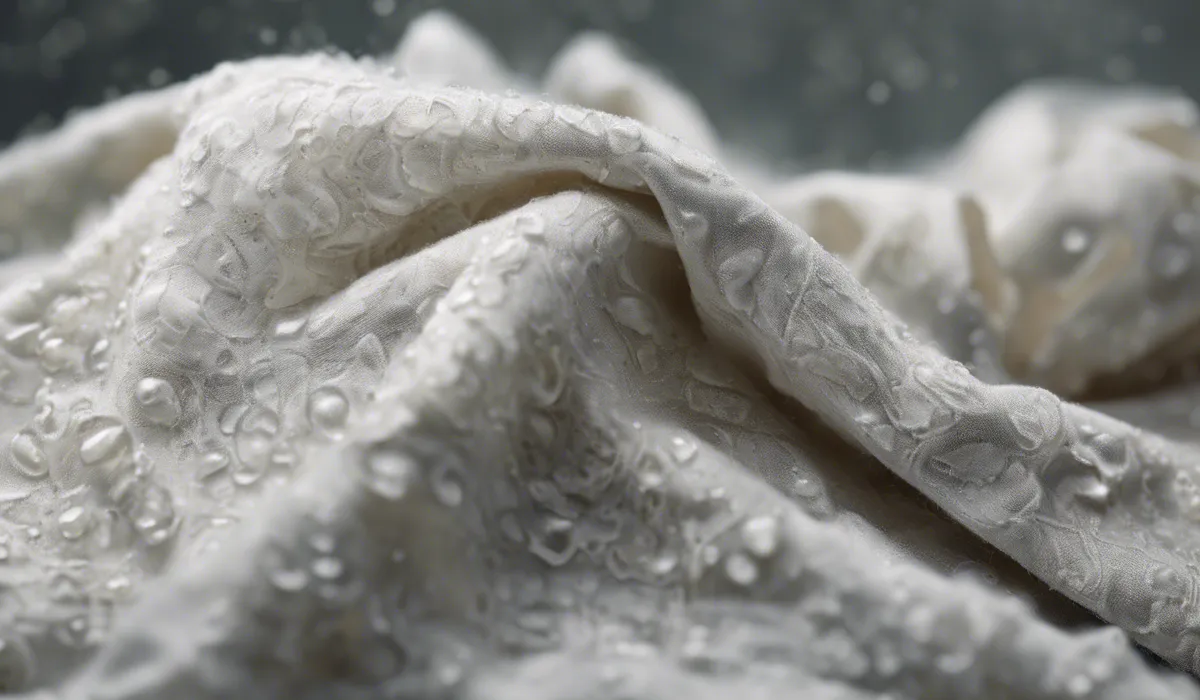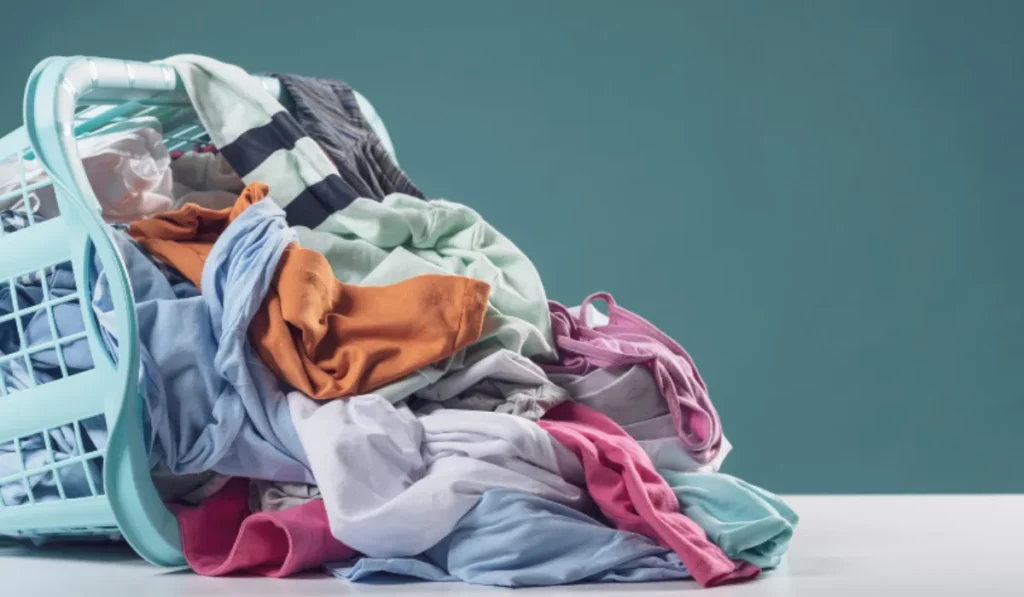Mildew on clothes is a fungal growth resulting from dampness, which appears as white or gray patches, often with a musty smell. It thrives in moist environments and can damage fabric if not treated promptly.
Understanding Mildew: Definition and Causes

What is Mildew?
Mildew is a type of fungus, closely related to mold, that thrives in moist environments. It is a living organism that feeds on organic materials, which unfortunately include the fibers in our clothes.
When conditions are right, mildew can quickly establish itself, creating a problem for your wardrobe and your health.
Optimal Conditions for Mildew Growth
Mildew loves damp, warm, and poorly ventilated spaces. When clothes are left in such environments, they become the perfect breeding ground for this pesky fungus.
Organic materials, such as cotton, linen, and other natural fibers, provide a food source for mildew to grow and reproduce.
Most Susceptible Fabrics
Natural fabrics are the most prone to mildew growth due to their organic nature. Synthetic materials may resist mildew better, but they are not immune, especially when organic residues like skin cells or food stains are present.
Mildew vs. Mold
While mildew and mold are both fungi, they differ in appearance and the surfaces they prefer.
Mold is often darker and may appear fuzzy or slimy, while mildew is typically lighter in color and powdery. Mold tends to invade deeper into materials, causing more damage over time.
Common Causes on Clothes
Leaving wet clothes in a pile, not drying them thoroughly, or storing them in damp places are surefire ways to invite mildew.
Each of these actions creates an ideal environment for mildew spores to settle and multiply on your clothing.
Identifying Mildew on Clothes

Visual Cues
Mildew makes its presence known through distinct white, grey, or yellow spots or streaks on fabric.
These unsightly blemishes can ruin the appearance of your clothes and indicate a deeper problem.
Texture of Mildewed Fabric
If you run your fingers across a patch of mildew, you might feel a powdery or fluffy consistency. This is the mildew colony itself, which has formed on the surface of the fabric.
Characteristic Mildew Smell
One of the first signs of mildew can be its musty odor, a smell that’s hard to ignore. This distinctive scent arises from the metabolic processes of the mildew fungus.
Typical Locations on Clothing
Mildew often appears in places on clothing that are prone to moisture, such as underarms and necklines. These areas need extra attention both in prevention and during cleaning.
Health Concerns
Besides damaging your clothes, mildew can cause allergic reactions and respiratory issues.
This makes it important not just for the lifespan of your garments, but for your well-being to address mildew promptly.
Prevention and Removal Strategies

Preventing Mildew on Clothes
Preventing mildew starts with proper washing and drying techniques. Ensure clothes are completely dry before putting them away and use moisture absorbers in closets to keep the environment dry.
Storing clothes in well-ventilated spaces also helps prevent mildew.
Natural Mildew Removal
Natural remedies are a safe and effective way to remove mildew. Vinegar, baking soda, and lemon juice can all be used to clean mildewed clothes, and sunlight is a natural disinfectant that kills mildew spores.
Chemical Solutions
If natural remedies don’t work, you can turn to chemical solutions designed specifically for mildew removal.
These laundry additives or disinfectants can be more powerful at killing mildew, but it’s important to use them correctly to avoid damaging your clothes.
Step-by-Step Mildew Removal
Removing mildew from clothes typically involves pre-treating the affected areas, washing with an appropriate cleaner, and making sure the clothing is completely dry afterwards.
Sometimes, multiple treatments may be necessary to fully remove the mildew.
Professional Cleaning or Disposal
There comes a point when professional cleaning may be the only solution, especially for delicate or heavily mildewed items.
If the damage is too extensive, it may be more practical to discard the clothing to prevent health risks and further contamination.
FAQs About Mildew on Clothes
What causes mildew to appear on clothes?
Mildew on clothes is caused by fungal growth resulting from damp conditions, often occurring when clothes are not dried properly.
How can I identify mildew on my garments?
Mildew can be identified as white or gray patches on fabric, typically accompanied by a musty smell.
Is mildew harmful to clothes?
Yes, mildew can damage fabric if it is not treated promptly, as it can weaken fibers and cause discoloration.
What environments are conducive to mildew growth on clothes?
Mildew thrives in moist, poorly ventilated environments, making damp laundry rooms and closets common places for growth.
How can I prevent mildew from growing on my clothes?
To prevent mildew, ensure clothes are completely dry before storing, use dehumidifiers in damp areas, and keep clothes in well-ventilated spaces.
Final Thoughts
Mildew on clothes manifests as white or gray patches with a distinct musty odor, a clear sign of fungal growth due to excessive moisture.
It’s especially prevalent in damp conditions and can cause irreversible damage to fabrics if not addressed quickly, emphasizing the importance of timely and effective treatment.
